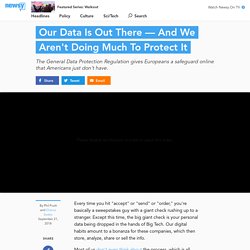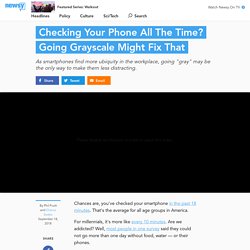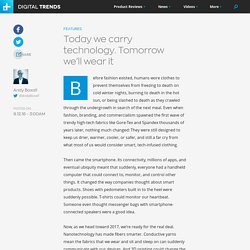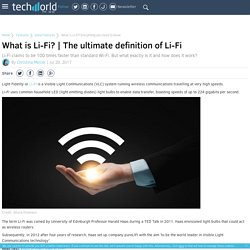

There's Not Much Protecting Your Data Online. Every time you hit "accept" or "send" or "order," you're basically a sweepstakes guy with a giant check rushing up to a stranger.

Except this time, the big giant check is your personal data being dropped in the hands of Big Tech. Our digital habits amount to a bonanza for these companies, which then store, analyze, share or sell the info. Most of us don't even think about the process, which is all permitted in those mile-long user agreements. IBM estimates we collectively generate quintillions of bytes of data every day. It's not surprising that privacy gets lost in the digital dust. There have been numerous warnings. Edward Snowden's disclosure in 2013 about NSA surveillance was an example of how data can be gathered without you knowing and used in ways you've never thought about.
Related Story The EU Wants To Know If Amazon Uses Third-Party Data To Its Advantage. Take Control of Your Smartphone by Going Grayscale. Chances are, you've checked your smartphone in the past 18 minutes.

That's the average for all age groups in America. For millennials, it's more like every 10 minutes. Are we addicted? Well, most people in one survey said they could not go more than one day without food, water — or their phones. What makes them so irresistible? Even when we want to unplug, it's not easy, and that's no accident. It's basic packaging. "Color and shape, these are the icebreakers when it comes to grabbing people's attention, and attention is the new currency," a neuroscience tech exec told The New York Times. Cbc.ca Podcasts. Use the links below to download a file.

Secrets in Sport: Mark Tewksbury and the 1992 Olympics Mark Tewksbury on gold medals and gay athletes. Download Secrets in Sport: Mark Tewksbury and the 1992 Olympics [mp3 file: runs 00:18:03] From Tragedy to Champion: Chantal Petitclerc and the 2008 Paralympics From a childhood accident to a Paralympic champion, and one of Canada’s most decorated athletes. DT10: The Future of Clothing Technology. Before fashion existed, humans wore clothes to prevent themselves from freezing to death on cold winter nights, burning to death in the hot sun, or being slashed to death as they crawled through the undergrowth in search of the next meal.

Even when fashion, branding, and commercialism spawned the first wave of trendy high-tech fabrics like Gore-Tex and Spandex thousands of years later, nothing much changed: They were still designed to keep us drier, warmer, cooler, or safer, and still a far cry from what most of us would consider smart, tech-infused clothing. Then came the smartphone. Its connectivity, millions of apps, and eventual ubiquity meant that suddenly, everyone had a handheld computer that could connect to, monitor, and control other things.
It changed the way companies thought about smart products. Shoes with pedometers built in to the heel were suddenly possible. Now, as we head toward 2017, we’re ready for the real deal. Climate Change Is Faster in National Parks, New Study Shows. There's something unique about U.S. national parks and preserves — something other than their natural beauty and cultural significance.

Researchers have found the effects of human-driven climate change are more pronounced inside their borders than anywhere else in the U.S. A new study shows from 1895 to 2010, the average temperature in national parks has increased twice as fast as the rest of the U.S. — about a degree Celsius. Average annual rainfall has also declined more widely in these parks than in the rest of the country. Why does this happen to the national parks but not other places? What's special about these pristine areas that makes them so vulnerable? "A lot of it is simply spatial position," says Jack Williams, a geography professor at the University of Wisconsin-Madison, who co-authored the new research. Williams' team says if greenhouse gas emissions don't change going forward, temperatures in those most exposed parks could climb by as much as 9 degrees Celsius by 2100. What is Li-Fi? Everything you need to know. Light Fidelity or Li-Fi is a Visible Light Communications (VLC) system running wireless communications travelling at very high speeds.

Li-Fi uses common household LED (light emitting diodes) light bulbs to enable data transfer, boasting speeds of up to 224 gigabits per second. The term Li-Fi was coined by University of Edinburgh Professor Harald Haas during a TED Talk in 2011. Haas envisioned light bulbs that could act as wireless routers. Subsequently, in 2012 after four years of research, Haas set up company pureLiFi with the aim 'to be the world leader in Visible Light Communications technology'.
Read next: Eight brilliant uses of Li-Fi How does Li-Fi work? Li-Fi and Wi-Fi are quite similar as both transmit data electromagnetically. As we now know, Li-Fi is a Visible Light Communications (VLC) system.